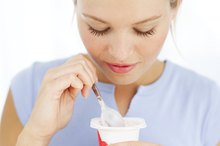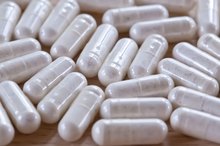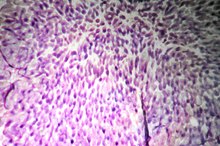What does fact checked mean?
At Healthfully, we strive to deliver objective content that is accurate and up-to-date. Our team periodically reviews articles in order to ensure content quality. The sources cited below consist of evidence from peer-reviewed journals, prominent medical organizations, academic associations, and government data.
- “Current Issues in Intestinal Microbiology”; Lactic Acid Bacteria as Probiotics; A. Ljungh and T. Wadstrom; September 2006
- “Current Issues in Intestinal Microbiology”; Lactic Acid Bacteria as Probiotics; A. Ljungh and T. Wadstrom; September 2006
- “Journal of Physiology and Biochemistry”; Daily Ingestion of Fermented Milk Containing Lactobacillus Casei DN114001 Improve Innate-defense Capacity in Healthy Middle-aged People; M.D. Parra, et al.; June 2004
- “Journal of Physiology and Biochemistry”; Daily Ingestion of Fermented Milk Containing Lactobacillus Casei DN114001 Improve Innate-defense Capacity in Healthy Middle-aged People; M.D. Parra, et al.; June 2004
The information contained on this site is for informational purposes only, and should not be used as a substitute for the advice of a professional health care provider. Please check with the appropriate physician regarding health questions and concerns. Although we strive to deliver accurate and up-to-date information, no guarantee to that effect is made.
Which Probiotic Bacteria Does Blue Cheese Have?
Probiotics are beneficial bacteria purported to regulate the digestive tract, prevent and treat urinary tract and vaginal yeast infections, improve recovery of intestinal infections, and possibly reduce the length and severity of the common cold and flu. Although eating probiotic food such as blue cheese isn’t necessary to maintain a healthy diet, you may experience some health benefits by doing so. The majority of dairy products, particularly yogurt and cheese, contains a certain amount of probiotic bacteria. In some cases, however, the probiotic content depends on the manufacturer.
If you are experiencing serious medical symptoms, seek emergency treatment immediately.
Lactic Acid Bacteria
Lactic acid is one of the most well-known probiotics. It is usually the starter culture for items like yogurt and cheese. According to a September 2006 article published in “Current Issues in Intestinal Microbiology,” lactic acid bacteria improved symptoms of allergic diseases and helped to improve immune response 1. Although hundreds of lactic acid probiotics exist, the most beneficial appear to be the lactobacillus group, also present in blue cheese. For example, a June 2010 article published in “FEMS Immunology and Medical Microbiology” found that Lactobacillus rhamnosus and Lactobacillus acidophilus effectively enhanced the immune system of elderly subjects. A June 2004 article published in the “Journal of Physiology and Biochemistry” found that Lactobacillus casei in fermented milk, such as cheese, improve immune defense response in health, middle-aged patients 2.
Bifidobacteria
Does Yogurt Help Digestion?
Learn More
Bifidobacteria are also well-recognized probiotics appearing in the majority of dairy products, including blue cheese. Lactic-acid bacteria and bifidobacteria typically work in conjunction with one another. For example, a March 2001 study published in “Food Technology and Biotechnology” says that these two bacterial types helped to alleviate lactose intolerance, prevent and reduce the symptoms of diarrhea, improve the immune system and lower cholesterol levels.
Fungus
The characteristic blue veins present in blue cheese are from the fungus Penicillium roqueforti. This fungal strain is also responsible for the pungent smell blue cheeses tend to have. Blue cheese also contains yeast, a type of fungus, particularly Debaryomyces hansenii, Yarrowia lipolytica, Kluyveromyces marxianus, Kluyveromyces lactis and Candida spp. These fungi contribute significantly to the taste of blue cheese are emerge somewhat symbiotically with lactic acid bacteria, according to a November 2003 article published in “Food Technology and Biotechnology.” Although some fungi do have probiotic qualities, the bacterial strains in blue cheese are far more beneficial.
- The characteristic blue veins present in blue cheese are from the fungus Penicillium roqueforti.
Considerations
Food With Lactobacillus
Learn More
Bifidobacteria and lactic acid bacteria are always present in blue cheese, although certain strains may not be included depending on the manufacturer. Since the efficacy of these microorganisms still requires further research, you should always consult your physician before making any dietary changes. This is particularly important if you have any intestinal conditions. Although these bacterial strains are generally already present in your intestinal tract, they exist in a delicate balance. Consuming a varied diet is ideal for your health.
- Bifidobacteria and lactic acid bacteria are always present in blue cheese, although certain strains may not be included depending on the manufacturer.
- Since the efficacy of these microorganisms still requires further research, you should always consult your physician before making any dietary changes.
Related Articles
References
- “Current Issues in Intestinal Microbiology”; Lactic Acid Bacteria as Probiotics; A. Ljungh and T. Wadstrom; September 2006
- “Journal of Physiology and Biochemistry”; Daily Ingestion of Fermented Milk Containing Lactobacillus Casei DN114001 Improve Innate-defense Capacity in Healthy Middle-aged People; M.D. Parra, et al.; June 2004
- Prevalence of Mycotoxins and Their Consequences on Human Health
- Diversity and Control of Spoilage Fungi in Dairy Products: An Update
- Examination of the taxonomic position of Penicillium strains used in blue cheese production based on the partial sequence of β-tubulin - PubMed
- Blue cheese-making has shaped the population genetic structure of the mould Penicillium roqueforti
- Foodborne infections
- Foodborne Germs and Illnesses | CDC
- Prevalence of Mycotoxins and Their Consequences on Human Health
Writer Bio
Skyler White is an avid writer and anthropologist who has written for numerous publications. As a writing professional since 2005, White's areas of interests include lifestyle, business, medicine, forensics, animals and green living. She has a Bachelor of Arts in anthropology from San Francisco State University and a Master of Science in forensic science from Pace University.









